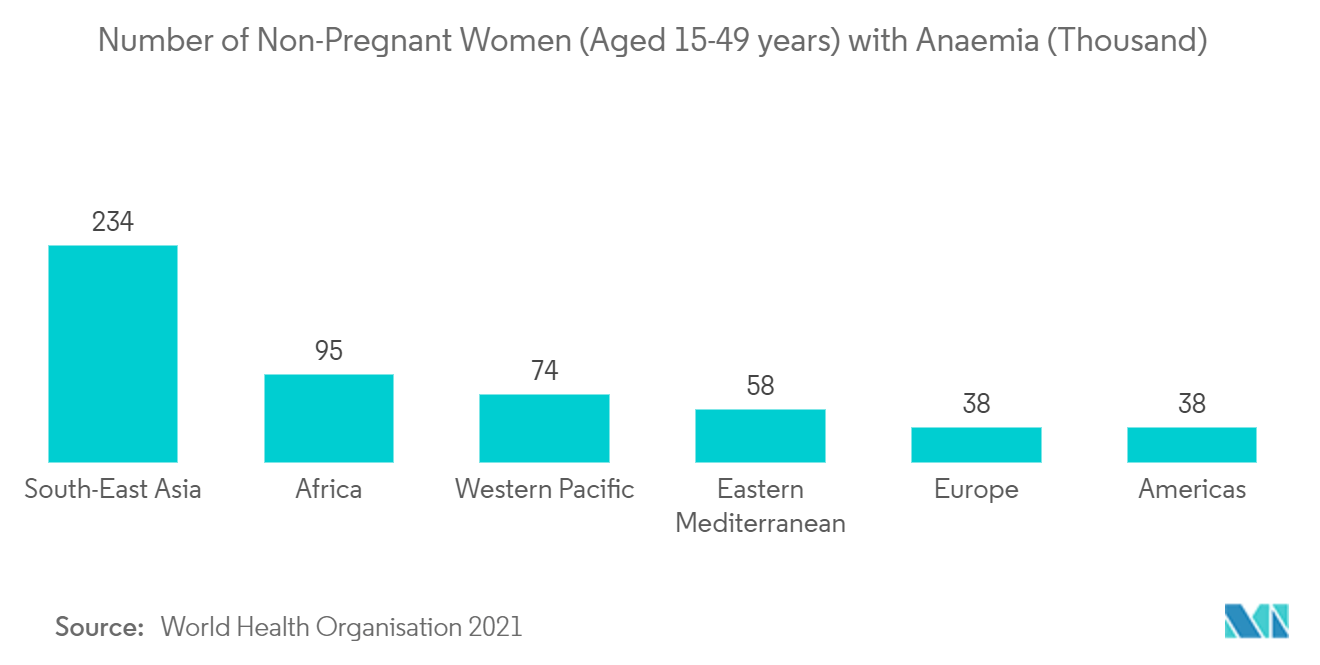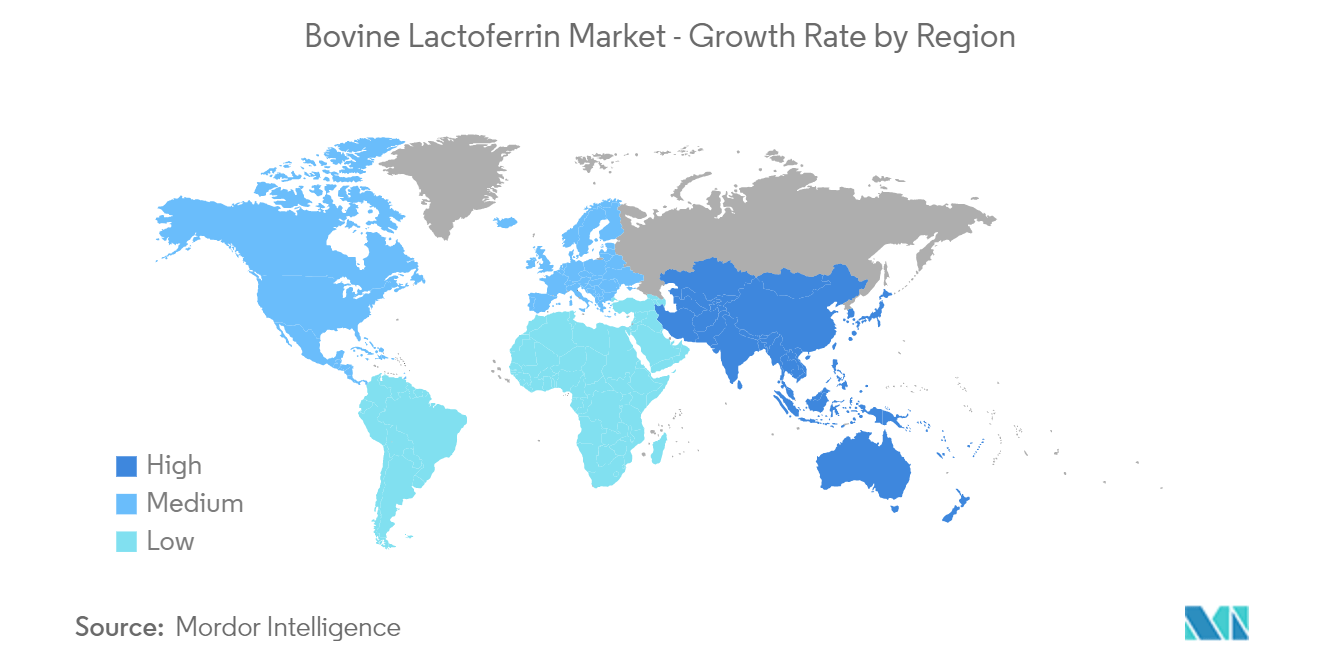Market Trends of Bovine Lactoferrin Industry
The Infant Formula is Projected to Represent a Significant Market Share
By application, the infant formula segment is anticipated to hold a major market share in the bovine lactoferrin market during the forecasted period. Certain clinical benefits, including immunity-boosting capabilities and iron-binding capacity, are surging the adoption of this product in infant formulas. For instance, according to clinical research data titled' Clinical research review: usefulness of bovine lactoferrin in child health,' published by Springer Nature Switzerland AG in August 2022, it was revealed that bovine lactoferrin is effective against respiratory tract infection. Also, it was reported that, by isolating iron, bovine lactoferrin could restrict the growth of several bacteria in the human body. Additionally, owing to its anti-viral activity, it is effective against gastrointestinal tract infections.
Furthermore, increasing focus on domestic brands for infant formula is encouraging local players to focus on introducing highly nutritious valued infant formula in the market and hold a major market share. For instance, according to an article published by Verdict Media Limited in April 2022, it was reported that Junlebao Dairy Group, Inner Mongolia Yili Industrial Group Co., and China Fiehi Ltd. are the largest manufacturers of infant formula in the China Market. Also, according to a press release published by Verdict Media Limited, in July 2022 it was reported that Inner Mongolia Yili Industrial Group Co. opened a manufacturing base of milk, cheese, and infant formula in China in response to the rising demand for dairy-based product and infant formula in the country. These increasing initiatives by the key players for manufacturing infant formula foster the demand and adoption of bovine lactoferrin as an added composition in infant formula.
Additionally, recent product launches by key players have been instrumental in the rising adoption of bovine lactoferrin in infant formula. For instance, in a press release by natural ingredients in August 2022, it was reported that Junlebao Dairy Group introduced a new infant formula under the brand name Quan Zhen Ai, which contains lactoferrin in the amount of 660 mg/liter milk. The high lactoferrin content alternatively increases the nutritional value of this infant formula and the adoption rate among the Chinese population.
Thus, the factors mentioned above are surging the growth of this segment in the bovine lactoferrin market during the forecast period.

Asia Pacific is Anticipated to Grow with the Highest Growth Rate During the Study Period
Asia-Pacific region is anticipated to register a significant growth rate during the study period owing to certain factors, including high awareness for nutritional products among the general population, growing demand for infant formula, and the emergence of domestic players with lactoferrin and lactoferrin-based products, among others.
Increasing product diversity by the key domestic players is resulting in the introduction of lactoferrin with advanced production technology. For instance, TurtleTree, a Singapore-based leading biotech company, introduced an advanced manufacturing technology in August 2022 to produce bovine lactoferrin on a large scale using precision fermentation technology. This latest technological advancement resulted in the increasing supply of lactoferrin to cater to this region's rising demand.
Additionally, the increasing adoption of domestic products, including infant formula, among the Chinese population is encouraging domestic players to widen their portfolio. For instance, according to a report published by Nutraingredients in November 2021, it was reported that Chinese consumers prefer domestic infant formula over international products, which enabled the local companies to increase their market share in the infant formula market. In addition, local companies, including Mead Johnson and Heilongjiang Feihe Dairy Co., are offering lactoferrin-based infant formula to compensate for the nutritional value of infant formula. This, in turn, is anticipated to increase the adoption rate of lactoferrin in infant formula and is expected to fuel the market growth in Asia-Pacific.
These factors mentioned above, coupled with an increasing number of working women in this region, are leading to a decline in the breastfeeding rate. For instance, according to data from Organisation for Economic Co-operation and Development (OECD), the percentage of the working-age women population increased from 70.62% in Q1 2019 to 72.76% in Q3 2022 in Japan. This further results in the higher demand and adoption of feeding formula among working parents in this region. This subsequently fostered the adoption rate of added nutritional molecules, including bovine lactoferrin in the composition, and is anticipated to show the highest market growth in Asia-Pacific.


